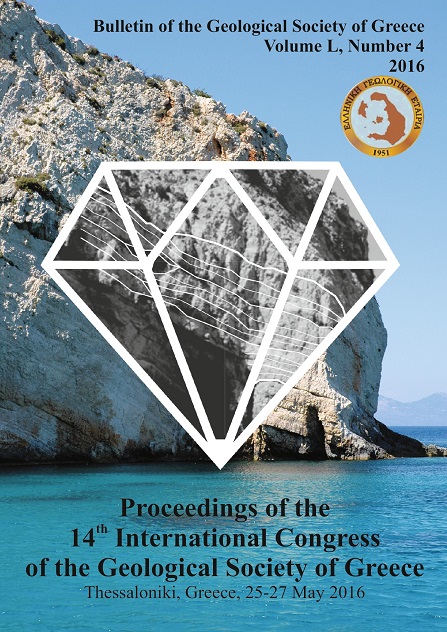GEOCHEMICAL CHARACTERISTICS OF THE ERENLERDAGI VOLCANICS, KONYA, CENTRAL TURKEY

Abstract
Late Miocene to Pliocene volcanism produced lava domes with mafic microgranular enclaves (MMEs), nuée ardentes and pyroclastic fall and flow (ignimbrites) deposits in the WSW and NW of Konya city. All samples are predominantly high K-calc alkaline in composition but calc-alkaline and shoshonitic composition also exist. The felsic volcanics are mainly dacite, andesite, basaltic trachyandesite and rare trachyandesite in compositon. But, the MMEs have basaltic andesite and andesite compositon. SiO2 increases with decreasing TiO2, FeOt, MgO and CaO, suggesting fractional crystallization of mafic minerals. All samples have fractionated chondritenormalised REE pattern (La/YbN: 6.7-18.1), and negative Eu anomaly (Eu/Eu*: 0.67- 0.89), indicating plagioclase fractionation. In primitive mantle-normalized spider diagram, the samples show an enrichment in large ion litophile elements (LILE) such as Cs and Ba, and depletion in high field strength elements (HFSE), e.g. Dy and Y. They show negative Nb, Ta and Ti anomalies, indicating a subduction signature for their genesis. Based on geochemical data, the volcanics are suggested to have been formed by Assimilation-Fractional Crystallization (AFC) and/or magma mixing process. Various geotectonic diagrams imply volcanic arc to post collisional setting for the samples.
Article Details
- How to Cite
-
Uyanık, C., & Koçak, K. (2016). GEOCHEMICAL CHARACTERISTICS OF THE ERENLERDAGI VOLCANICS, KONYA, CENTRAL TURKEY. Bulletin of the Geological Society of Greece, 50(4), 2057–2067. https://doi.org/10.12681/bgsg.11952
- Section
- Petrology and Mineralogy

This work is licensed under a Creative Commons Attribution-NonCommercial 4.0 International License.
Authors who publish with this journal agree to the following terms:
Authors retain copyright and grant the journal right of first publication with the work simultaneously licensed under a Creative Commons Attribution Non-Commercial License that allows others to share the work with an acknowledgement of the work's authorship and initial publication in this journal.
Authors are able to enter into separate, additional contractual arrangements for the non-exclusive distribution of the journal's published version of the work (e.g. post it to an institutional repository or publish it in a book), with an acknowledgement of its initial publication in this journal. Authors are permitted and encouraged to post their work online (preferably in institutional repositories or on their website) prior to and during the submission process, as it can lead to productive exchanges, as well as earlier and greater citation of published work.


